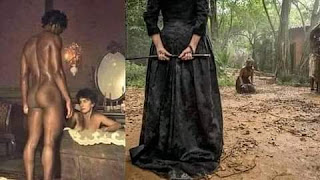In England, those guilty of treason against the country, king, or queen were Hanged, Drawn, and Quartered
In England, those guilty of treason against the country, king, or queen were Hanged, Drawn, and Quartered
Medieval England had a system of execution determined by the offender’s social class. The punishment for murder was, well, to be murdered, but where a commoner would be hanged for the offense, an aristocrat would be beheaded. However, those guilty of high treason – that is, plotting against the ruling monarch or the country at large – would be hanged, drawn, and quartered. Although the punishment had its roots in the medieval period, the last person to be hanged, drawn, and quartered was Robert Emmet in 1809. Thus we can cite the 1660-sentencing of Major General Thomas Harrison for the best account:
‘[dragged] upon a hurdle to the place of execution, and then you shall be hanged by the neck and, being alive, shall be cut down, and your privy members [genitals] to be cut off, and your entrails to be taken out of your body and, you living, the same to be burnt before your eyes, and your head to be cut off, your body to be divided into four quarters, and head and quarters to be disposed of at the pleasure of the King’s majesty. Harrison was convicted of having King Charles I executed after the restoration of the monarchy.
The crime of treason was punished in the same way across social classes. Amongst the list of unfortunate victims executed in this way, the most famous are William Wallace for his role in the Scottish Wars of Independence, Hugh le Despenser for his alleged affair with Edward II, John Ball for his part in the Peasants’ Revolt, Edmund Campion the Catholic martyr, and Guy Fawkes for the Gunpowder Plot. The notoriety of the traitors, along with the ghastly spectacle of the punishment itself, ensured that such executions drew big crowds. Their heads were customarily placed along London Bridge as deterrents.




Comments
Post a Comment